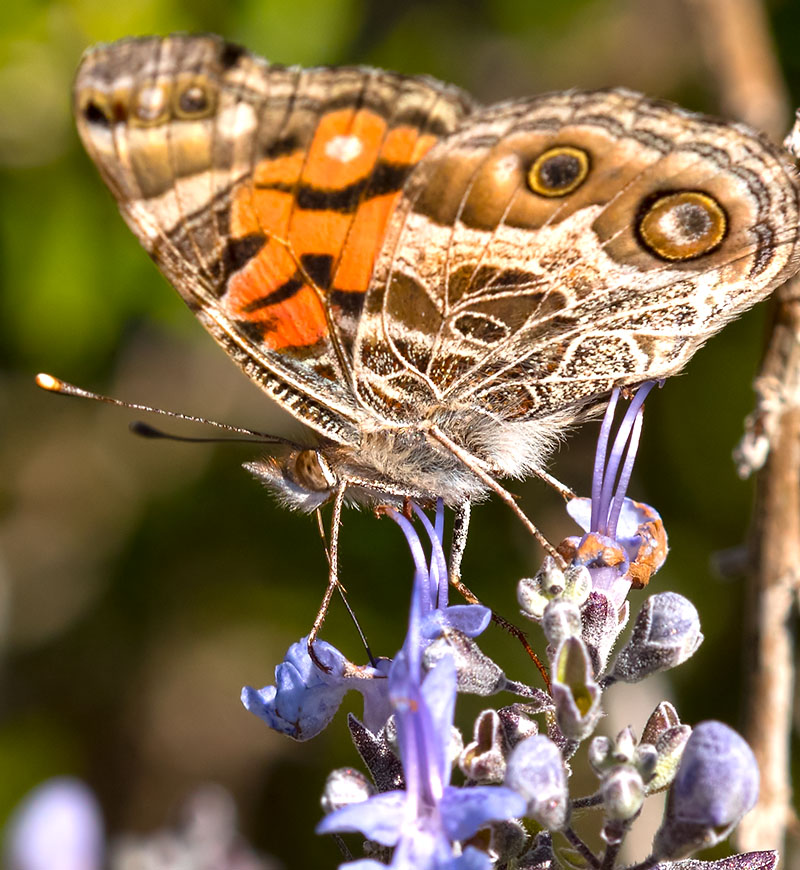
Buckeye Close-up
Welcome to my Texas Hill Country butterfly pictures page. I believe I have accurately identified the various butterflies here, but I would always appreciate confirmation or corrections. You can contact me here. See also Texas Hill Country Birds! and Starry Nights pictures. I have some extreme close-up butterfly shots here. My pimary butterfly page is here.

Wimberley February 2016 trip where the rosemary was in full bloom. Nikon D750 camera with 200mm macro lens, 1/640, f11, ISO 800, mounted on a monopod. There's one of these on the butterfly close-up page
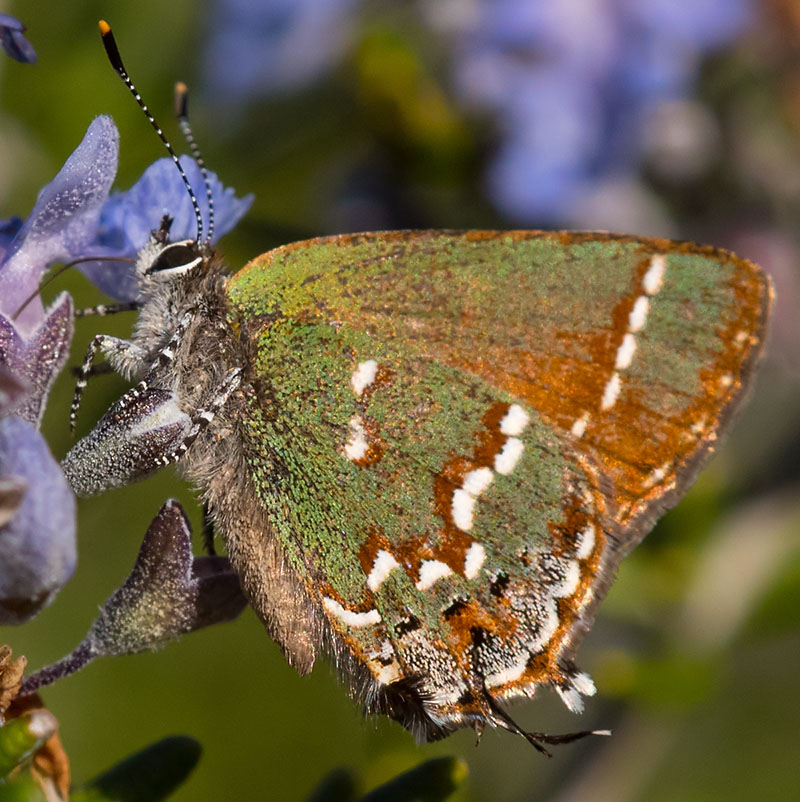
There were some small green skippers that I haven't seen before during our February 2016 trip to Wimberley. It's a Callophrys gryneus - Juniper Hairstreak (ID courtesy of the folks at bugguide.net). These tend to hang out in one area for quite some time. They keeps their wings folded up most of the time, and are smaller than most of the other skippers that were all over the blooming rosemary. He has some dangly things on the backside, I'm sure to confuse predators. Cliff Ivy adds some info: Texas Juniper Hairstreak based on location and the two aligned basal spots whereas with subspecies gryneus the lower spot is usually aligned distally to the top spot... Yes the tails are moved to confuse predators. Better to lose some tail rather than the head. There's one of these on the butterfly close-up page
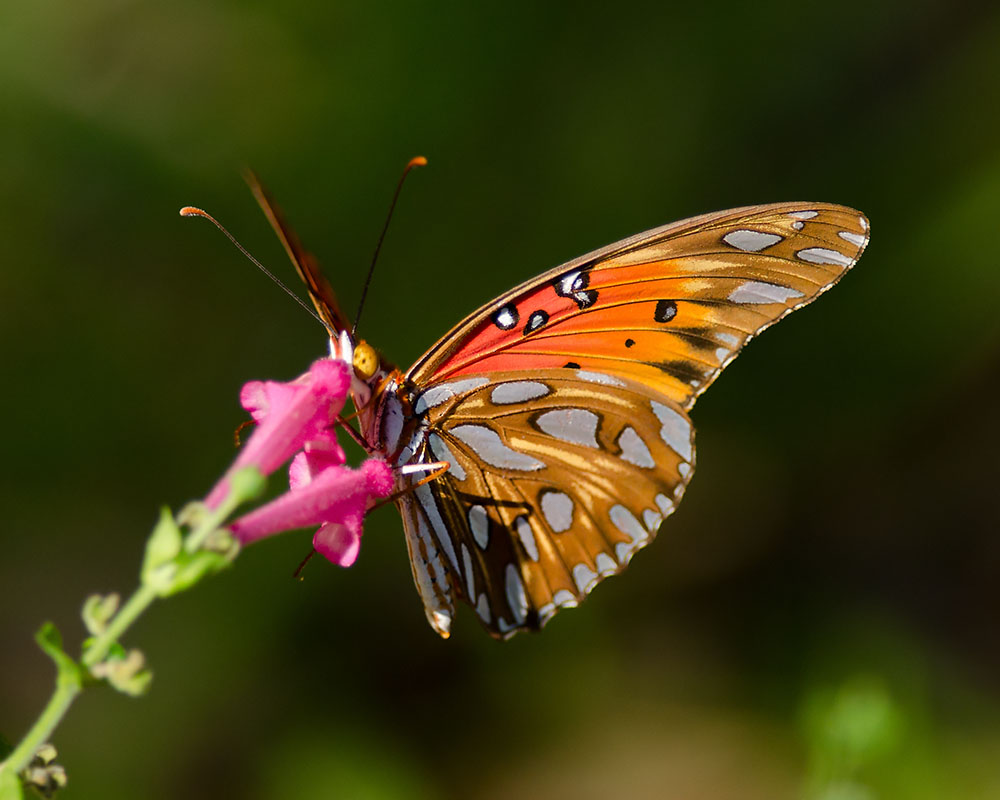
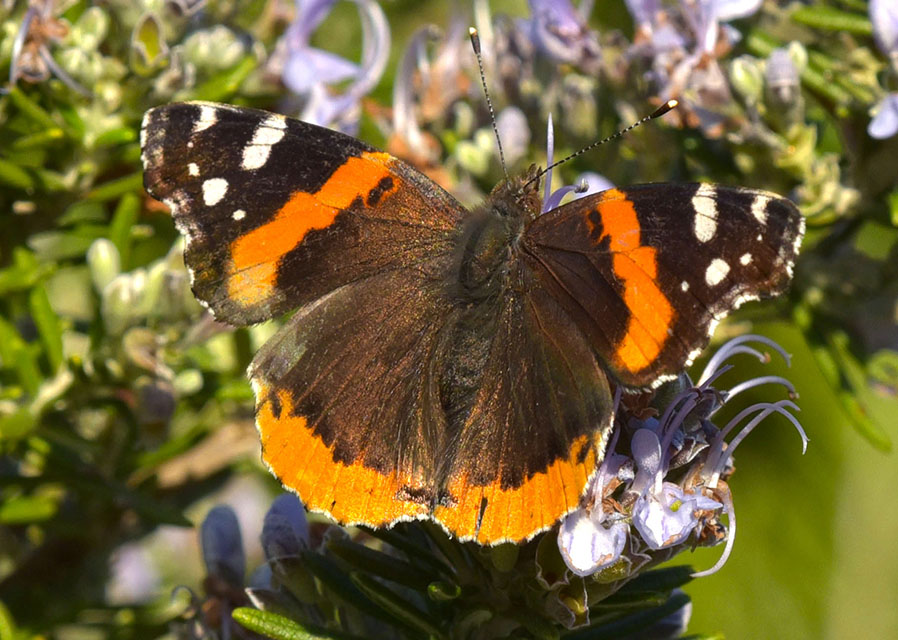
Top View. Wimberley February 2016 trip. Nikon D750 camera with 200mm macro lens, 1/500, f11, ISO 640, mounted on a monopod. Here's a link to the bugguide.net classification.
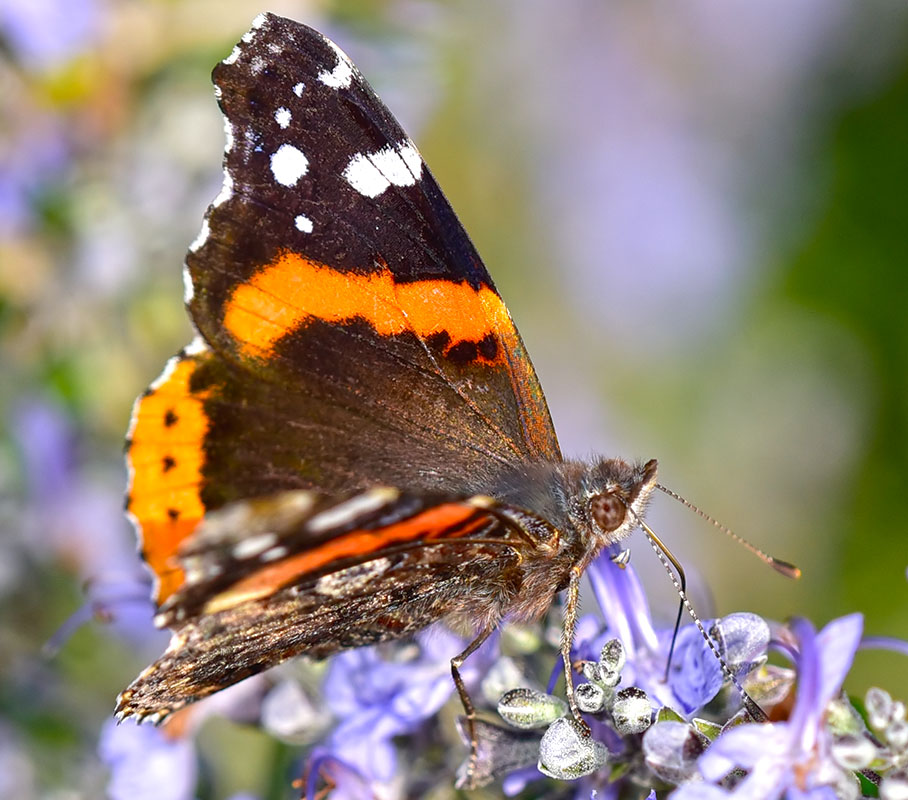
Side view getting after the rosemary flower nectar. February 2016, Nikon D750, 200mm macro lens, f8, 1/1600, ISO 800, monopod mounted.
_D759026.jpg)
Hodges#4447 (Euptoieta claudia). February 2016, Nikon D750, 200mm macro lens, f8, 1/1600, ISO 800, monopod mounted. There's another picture and classification info at this link (takes you to bugguide.net).
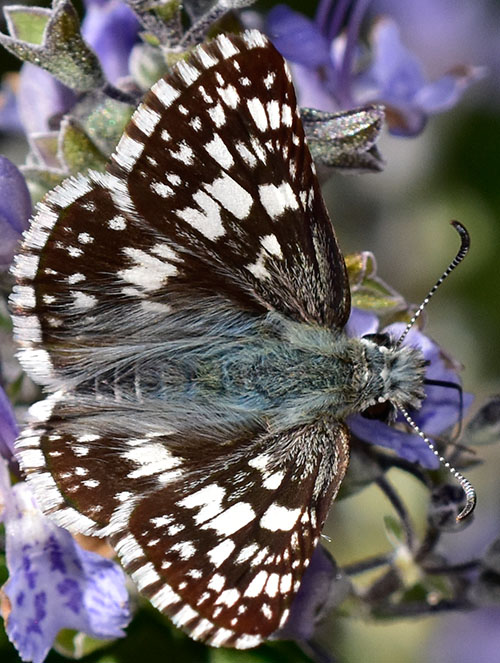
Cliff from bugguide.net advises: Either Common or White Checkered Skipper which are identical except by dissection. Since the location is at the range edge overlap, this specimen can not be ID to species by phenotype. The bluish basal area is common to males. Nikon D7200, 200mm macro lens, f10, 1/1000s, ISO 500, SB-800 fill flash. I spot-metered at -2/3 stop, with the fill flash set at about -1 2/3 stop, which is a typical setting. There's one of these on the butterfly close-up page.
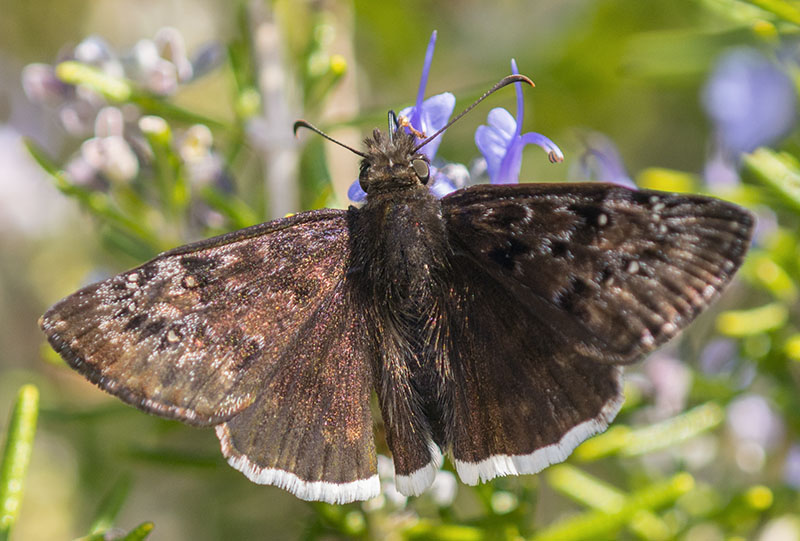
September 2016, change from Funereal Duskywing (Erynnis funeralis) to Mournful Duskywing based on further consideration from the experts! Here's the link to bugguide.net classification and discussion. This is a new-to-me species from the February 2016 trip. Nikon D7200, 200mm macro lens, f5.6, 1/1000, ISO 500, SB-800 fill flash.
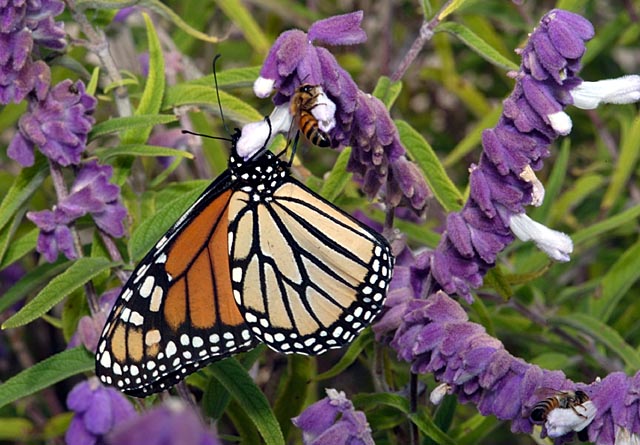
Monarch Butterfly and Two Bees on Mexican Bush Sage. Wimberley, Texas, October 2003. I previously thought the plant was Mexican Sage. Gil initially disagreed, but Doug says "That is one of the Salvia Leucantha, Mexican Bush Sages." and Gil is now on board with that!
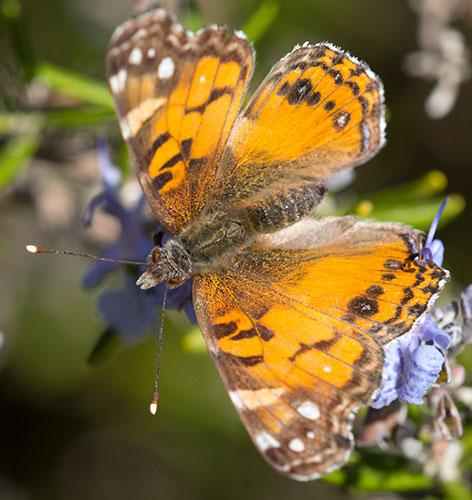
For ID purposes, February 2016. Bugguide.net classification is here.
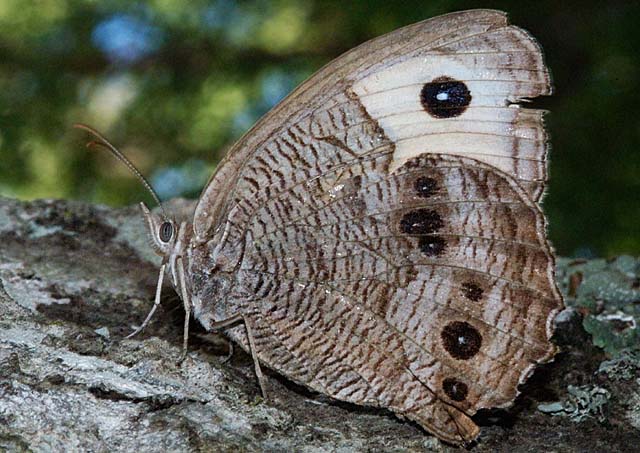
Wimberley, Texas, October 2003 AKA Wood nymph, Large wood nymph, Southern wood nymph, Blue-eyed grayling, Google eye
Note the common wood nymph butterfly picture above shows the spots on the wings. Those look a bit like eyes. Birds will go for the eyes of something they're eating first. Thus, this is a defense mechanism for butterflies, as birds will go for the spots on the wings and not the "real" eyes. This probably explains the V-shaped hole in the upper right part of this butterfly's wings.
Hope you enjoyed looking at the butterfly pictures! These are a challenge to shoot as they seldom stay in one place for long.
|
|
| |
Texas Hill Country Pictures Page 2 (More butterflies)

Dragonfly and Damselfly Pictures
Copyright © by Dick Locke. All Rights Reserved.
Contact and Image Use Information